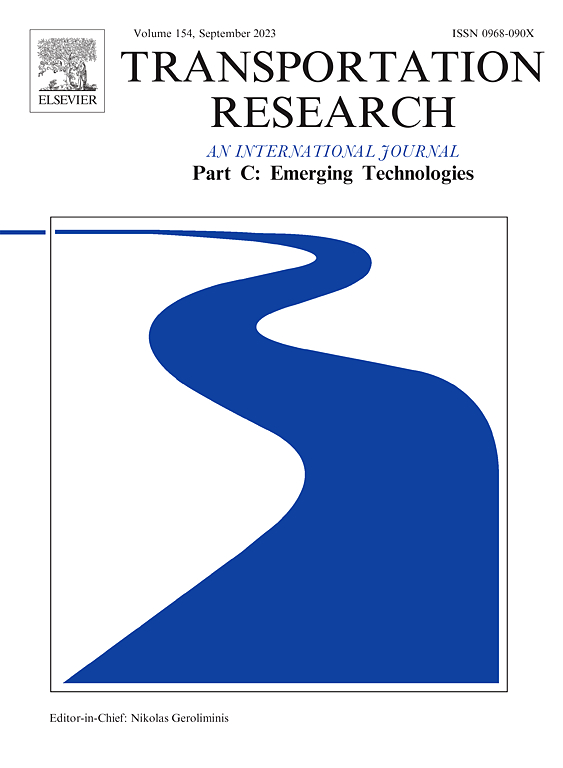Cooperative adaptive cruise platoon controller design considering switching control and stability
IF 7.6
1区 工程技术
Q1 TRANSPORTATION SCIENCE & TECHNOLOGY
Transportation Research Part C-Emerging Technologies
Pub Date : 2025-02-11
DOI:10.1016/j.trc.2025.105024
引用次数: 0
Abstract
With the advancement of Cooperative Adaptive Cruise Control (CACC) technology, the CACC platoon control strategy has emerged as a significant innovation in enhancing road capacity, stability, and safety while reducing emissions. The advantages of CACCs can be further enhanced by enlarging the platoon size. With a larger platoon size, the CACC platoon can reduce the desired time gap and increase capacity while maintaining string stability. However, altering the desired time gap during operations due to changes in platoon size necessitates controller switching, highlighting the absence of an efficacious strategy to guarantee smooth switching and stability. To address these challenges, this paper introduces a novel switching control strategy named Cooperative Adaptive Cruise Platoon Control (CACPC). This strategy considers the CACC platoon as the control object and dynamically adjusts to variations in platoon size, thereby enhancing the utilization of CACC technology. Employing the Youla-Kučera (YK) parameterization, a class of controllers is developed that encompasses all controllers capable of stabilizing the CACC platoon, thereby ensuring stability during controller transitions triggered by changes in platoon size. Prior to switching, YK parameterization operates under a feedback control mode, stabilizing the platoon based on current operating conditions. Upon switching, YK transitions into an adaptive control mode, adjusting the controller to accommodate changes in platoon size while maintaining string stability. Additionally, a tuning function is formulated as the switching signal for the controller class via YK parameterization, making CACPC adaptable to diverse platoon sizes. Through comprehensive numerical analyses and simulations, the impact of CACPC on the dynamic performance of the platoon was evaluated. The results demonstrate that CACPC effectively maintains string stability across various platoon sizes and significantly attenuates spontaneous perturbations induced by controller switching due to platoon size alterations, notably reducing the perturbation amplitude from 2 m/s2 to 0.011 m/s2.
求助全文
约1分钟内获得全文
求助全文
来源期刊
CiteScore
15.80
自引率
12.00%
发文量
332
审稿时长
64 days
期刊介绍:
Transportation Research: Part C (TR_C) is dedicated to showcasing high-quality, scholarly research that delves into the development, applications, and implications of transportation systems and emerging technologies. Our focus lies not solely on individual technologies, but rather on their broader implications for the planning, design, operation, control, maintenance, and rehabilitation of transportation systems, services, and components. In essence, the intellectual core of the journal revolves around the transportation aspect rather than the technology itself. We actively encourage the integration of quantitative methods from diverse fields such as operations research, control systems, complex networks, computer science, and artificial intelligence. Join us in exploring the intersection of transportation systems and emerging technologies to drive innovation and progress in the field.

 求助内容:
求助内容: 应助结果提醒方式:
应助结果提醒方式:


